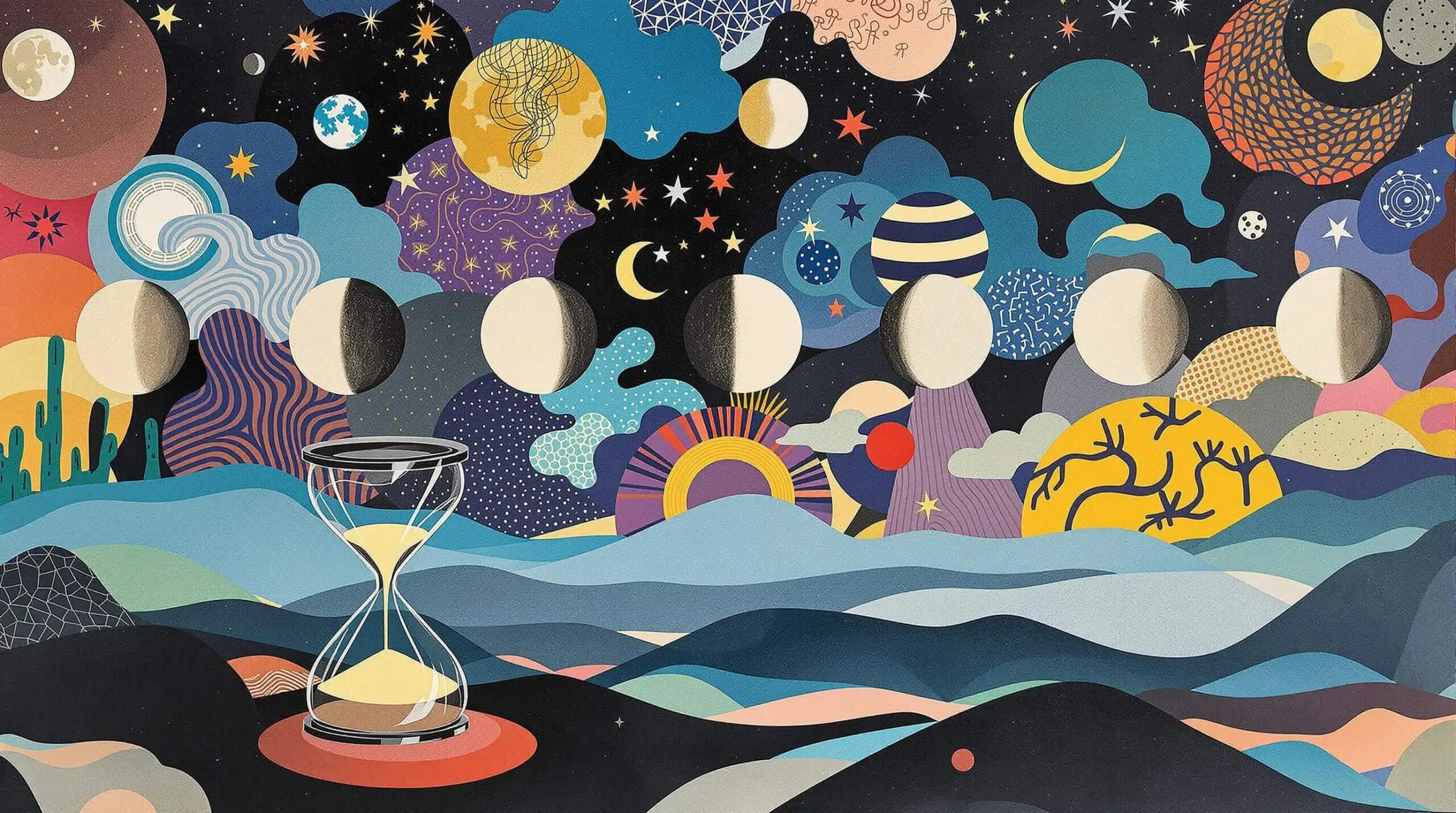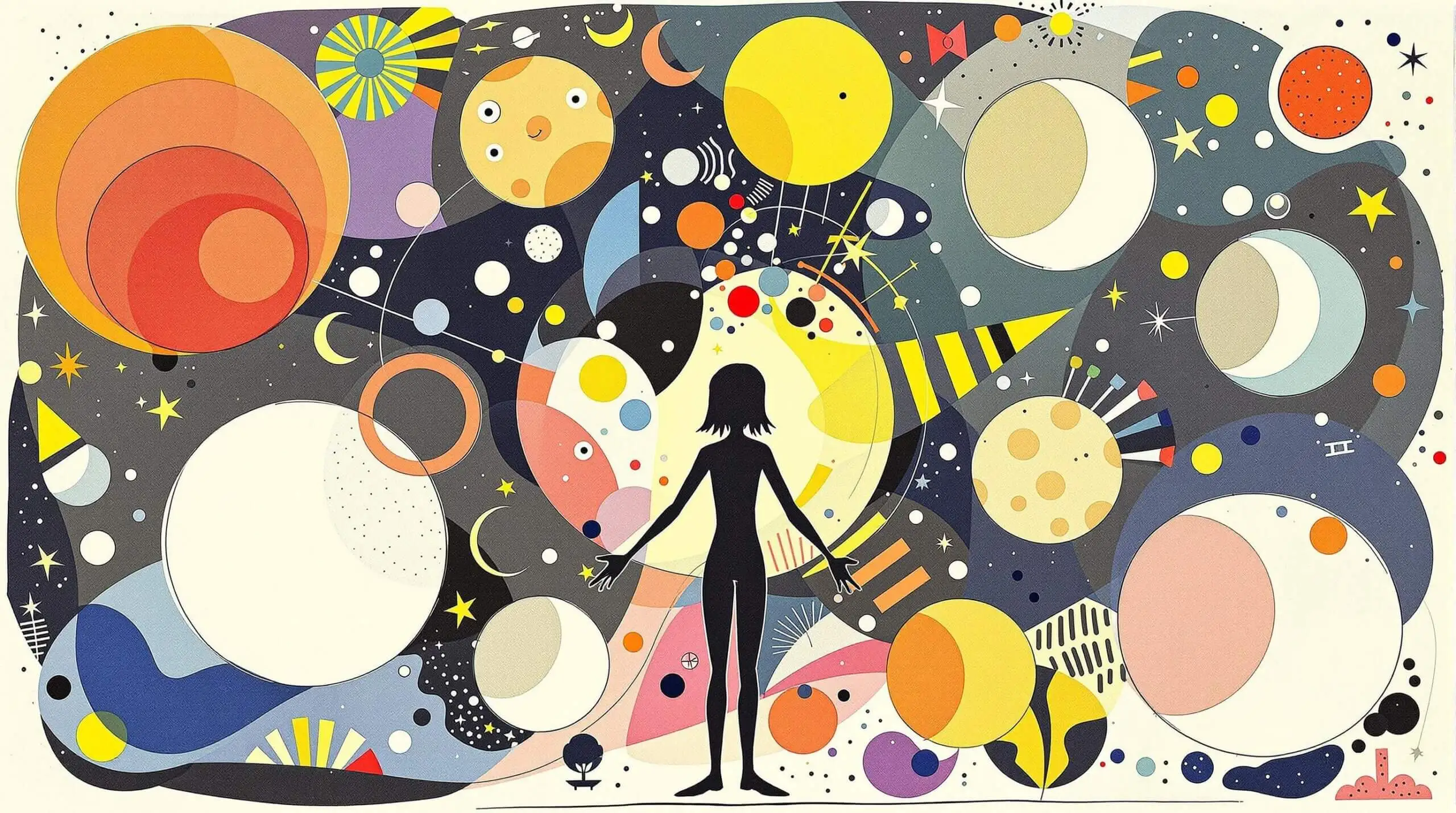The Moon’s Influence: Lunar Cycles and Biological Age
Explore how lunar cycles may affect biological age and natural rhythms in living organisms.

Understanding the Moon’s Impact on Human Biology and Aging
The Ancient Connection Between Lunar Cycles and Human Health
For millennia, humans have observed connections between the moon’s phases and biological rhythms. From ancient civilizations tracking fertility cycles to modern research on sleep patterns, the moon’s influence on our bodies has fascinated scientists and health researchers. Recent studies suggest these lunar effects might extend beyond our daily routines to influence our biological aging process.
Scientific Evidence of Lunar Influence
Modern science has begun documenting measurable effects of lunar cycles on human biology. Research published in Science Advances demonstrates that human sleep patterns fluctuate with lunar phases, showing decreased deep sleep during full moons. These sleep disruptions affect hormonal balance, cellular repair, and potentially our biological age.
The Evolution of Lunar-Human Research
The field of chronobiology – studying biological rhythms – has expanded to include lunar effects. While early studies focused on reproductive cycles and behavior, current research examines molecular and genetic responses to lunar phases. Scientists at Harvard Medical School have identified cellular processes that respond to gravitational changes during different moon phases.
Common Misconceptions About Lunar Effects
Many dismiss lunar influences as pseudoscience, but research shows legitimate biological connections. The key misconception is that lunar effects are purely psychological. Evidence indicates physical responses to gravitational changes, light exposure variations, and electromagnetic field fluctuations during lunar cycles.
Research Data and Statistics
Studies tracking biological markers during lunar cycles reveal interesting patterns. Research shows a 20-30% variation in human growth hormone production aligned with lunar phases. Cortisol levels fluctuate up to 15% between new and full moons. These hormonal changes can significantly impact cellular aging processes.

Biological Rhythms and Lunar Cycles: Current Understanding
Circadian Rhythms and Lunar Influence
Our internal 24-hour clock interacts with lunar cycles in surprising ways. Research from the University of Washington shows that circadian gene expression varies with lunar phases. This variation affects sleep quality, hormone production, and cellular repair mechanisms – all crucial factors in biological aging.
Hormonal Responses to Lunar Phases
The moon’s gravitational pull affects more than ocean tides – it influences human hormonal systems. Studies indicate that melatonin and cortisol production shift during different lunar phases. These hormonal fluctuations can accelerate or slow cellular aging processes depending on their patterns and intensity.
Lunar Cycles and Aging: Mechanisms and Effects
Cellular Response to Lunar Influence
At the cellular level, lunar cycles affect various aging markers. Research from the Max Planck Institute shows that cellular repair mechanisms operate more efficiently during certain lunar phases. DNA repair activity increases during new moons, while cellular stress responses peak during full moons.
Impact on Telomere Length
Telomeres – protective caps on our chromosomes that shorten with age – show interesting responses to lunar cycles. Studies suggest that telomerase activity (which maintains telomere length) varies with lunar phases. This variation might explain why some people age differently despite similar lifestyles.
Key Areas of Investigation
Several aspects of lunar influence deserve attention. The electromagnetic effects of lunar phases on cellular membranes show promise in understanding aging processes. Additionally, the moon’s impact on circadian rhythm proteins appears to influence longevity genes.
Practical Applications for Longevity Enhancement
- Align sleep schedules with lunar phases for optimal rest
- Time high-intensity exercise according to lunar energy peaks
- Adjust fasting periods to lunar cycles
- Monitor stress management needs during full moons
- Optimize supplement timing based on lunar phases
- Plan recovery days around lunar influences
- Adjust meditation practices to lunar energy patterns
- Consider lunar phases when planning major health interventions
- Monitor sleep quality through lunar cycles
- Adapt dietary choices to lunar rhythms
Implementing Lunar-Aware Health Strategies
- Track personal biomarkers across lunar cycles
- Create a lunar-phase health calendar
- Monitor energy levels during different moon phases
- Adjust workout intensity based on lunar energy
- Plan rest days around challenging lunar phases
- Optimize meal timing with lunar cycles
- Schedule important health appointments strategically
- Maintain a lunar phase journal
- Adjust sleep environment during full moons
- Modify stress management techniques according to lunar influence
Future Research Directions
Scientists are exploring several promising areas in lunar-influenced aging research. New studies focus on genetic expression patterns during different lunar phases. Research into cellular repair mechanisms and their relationship with lunar cycles might reveal new approaches to age management.
Additional studies examine:
- Molecular changes during lunar phases
- Genetic expression patterns across lunar cycles
- Hormone optimization strategies
- Cellular repair timing
- Sleep quality enhancement methods
- Stress response patterns
- Exercise timing optimization
- Nutritional timing strategies
- Recovery protocol adjustments
- Chronobiology applications
Emerging Technologies in Lunar-Based Health Monitoring
New technologies help track and utilize lunar influences on health:
- Advanced sleep tracking devices
- Lunar phase health apps
- Biomarker monitoring systems
- Circadian rhythm optimization tools
- Hormone tracking technology
- Environmental monitoring devices
- Personal health tracking systems
- Stress measurement tools
- Recovery monitoring equipment
- Cellular health assessment technology
Practical Implementation and Personal Optimization
Creating Your Lunar Health Strategy
Understanding your personal response to lunar cycles is crucial. Start by tracking sleep patterns, energy levels, and mood across different moon phases. Use this data to adjust daily routines and health practices. Simple changes like adjusting bedtime during full moons can significantly impact biological aging processes.
Optimizing Daily Routines
Incorporate lunar awareness into daily health practices. Schedule high-intensity workouts during waxing moon phases when energy typically peaks. Plan relaxation and recovery during waning phases. These adjustments can enhance cellular repair and slow biological aging.
Long-term Health Planning
Consider lunar cycles when planning long-term health strategies. Major lifestyle changes, new exercise programs, or dietary modifications might be more successful when started during specific lunar phases. This approach aligns with natural biological rhythms and may improve outcomes.
Conclusion: Integrating Lunar Awareness for Enhanced Longevity
The connection between lunar cycles and biological aging offers exciting possibilities for health optimization. By understanding and working with these natural rhythms, we can potentially enhance our longevity efforts. The key lies in personalized observation, consistent tracking, and thoughtful adjustment of health practices according to lunar phases.
Scientific research continues to uncover new aspects of lunar influence on human biology. While more studies are needed, current evidence suggests that paying attention to lunar cycles could provide valuable tools for managing biological age. As we learn more about these connections, we can develop more effective strategies for healthy aging aligned with natural rhythms.